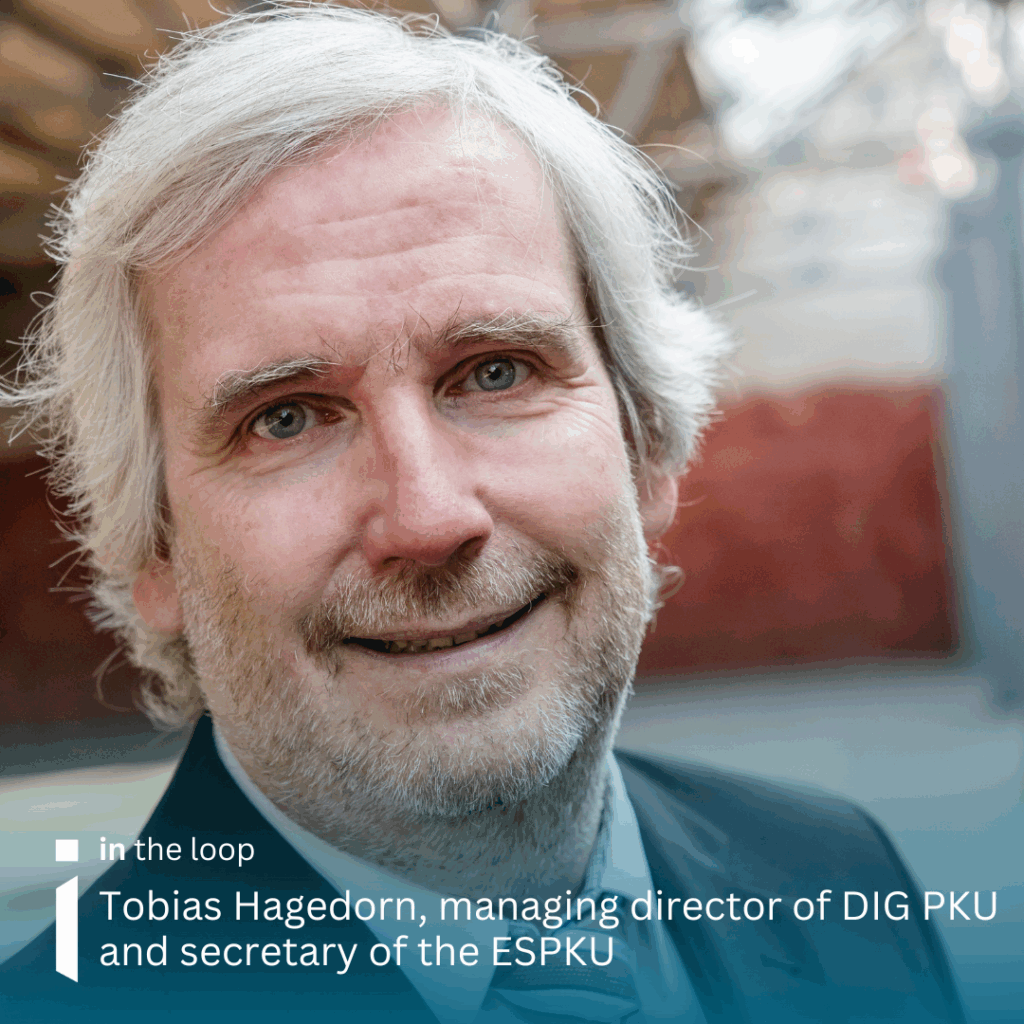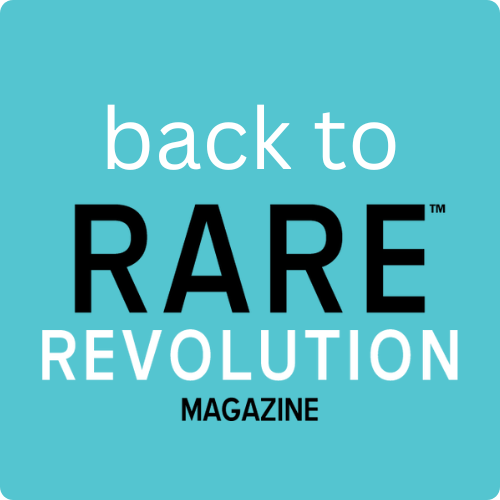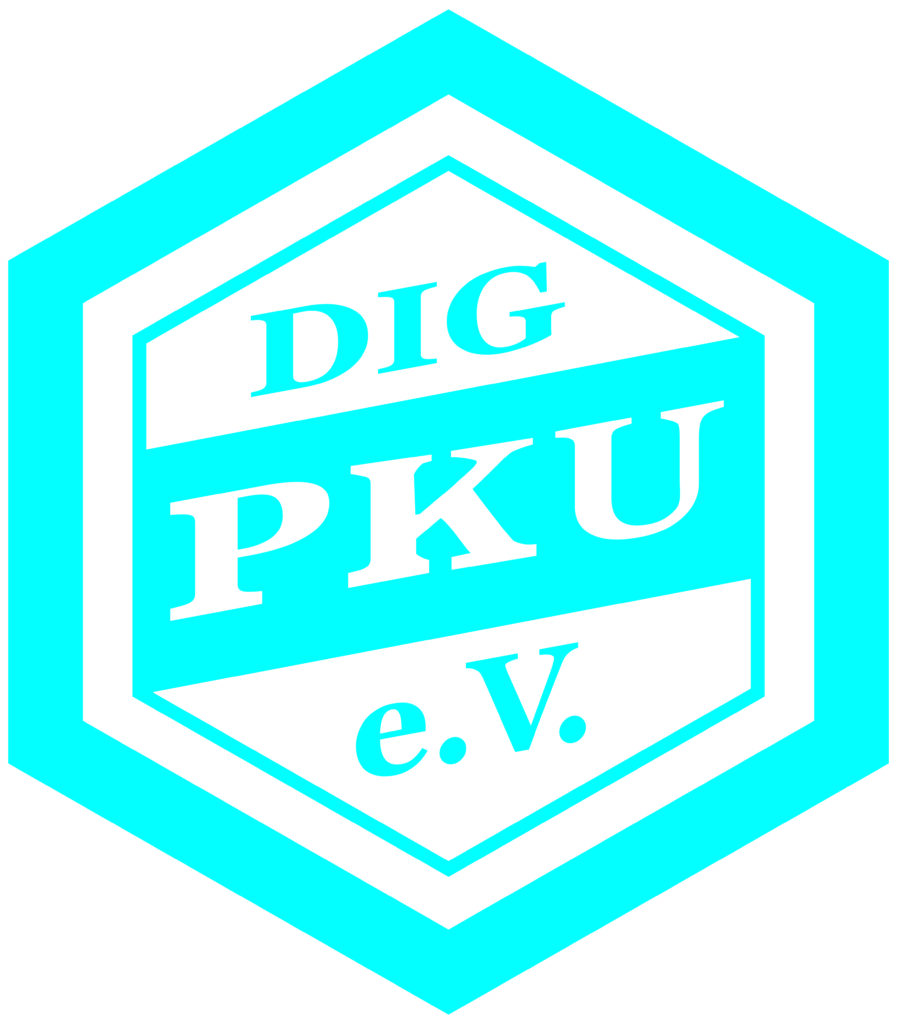Stretched thin
With insights from Tobias Hagedorn, managing director, DIG PKU and secretary of the European Society for Phenylketonuria (ESPKU)
Estimated reading time: 10 minutes

The stakes are high. The current advocacy model is breaking down before our eyes as unsustainable demands from all sides stand to bring our beloved small but mighty, rare disease advocacy groups to their knees. But what role can industry play in staving off this pending catastrophe
In the world of rare disease advocacy, leaders like Tobias Hagedorn from the European Society for PKU (ESPKU), face an increasingly complex challenge—being all things to all people while operating on shoestring budgets. “We really try to combine advocacy work, storytelling, policy reform, basic supportive care work, supporting our families, patients, their moms, dads, siblings, grandparents—supporting them in their daily lives in everything we can reach,” Tobias explains.
Tobias is not alone. Every week I speak to advocacy leaders, and the voice is united— the work is brutally hard, and in today’s landscape that work is getting harder.
The demands on advocacy leaders require advocates to simultaneously wear multiple hats; policy strategist, emotional support provider, fundraiser, educator and community builder. The ESPKU and their local member organisations like DIG PKU, for instance, must balance international policy advocacy with local community needs—from organising conferences to providing critical information and emotional support. “Our community has basic needs,” Tobias notes. “They need to come together, to see each other, to validate that their feelings are normal. They need cooking classes to help with their highly specialised diet, information events and the reassurance that they’re not alone.” But the work is anything but basic—at the same time, these organisations must engage in high-stakes policy work and so much more.
For the ESPKU and countless other organisations, this means navigating complex EU legislation, creating cross-party alliances and advocating for broader patient needs at every level.
The financial constraints make this balancing act even more challenging. Many organisations rely heavily on volunteers, with limited resources. All while being called on by healthcare systems, governments and industry to become more professionalised and deliver yet more capacity. But the current model is inherently unsustainable, as Tobias rightly explains.
“We’re exploiting the goodwill of people to do this work, and it’s far from sustainable.”
The consequences are significant. Advocacy leaders face burnout, struggling to manage full-time jobs, family responsibilities and the intense emotional labour of representation—typically while juggling their own personal health battles or that of their loved ones. And with notable changing societal attitudes today volunteering and unpaid work, the pressure on these leaders has never been greater.
This is a problem that we all need to sit up and pay attention to—or ignore at the peril of the whole rare advocacy movement.

The volunteer dilemma: sustaining passion in patient advocacy
In the world of patient advocacy, volunteers are the lifeblood of organisations, yet finding and maintaining committed volunteers has become increasingly challenging, particularly in a post pandemic landscape. Simply put—the world has changed.
Tobias offers a candid insight into this critical issue. “When I look into the younger generation, they have a great interest in a good work-life balance,” he explains, and are surrounded by a “work your wage” narrative which isn’t conducive to the way the third section must operate through necessity. This generational shift presents a significant challenge for organisations traditionally reliant on passionate, unpaid advocates. As Tobias notes, “We risk losing talented advocates from the ecosystem if we cannot provide meaningful support and recognition.”
As current highly committed, experienced and motivated advocates age out, or burn out, from the space, we are facing a looming volunteer black hole. We can no longer bury our heads in the sand. We must face the key challenges if we are to find solutions.
Emotional burnout
Volunteer advocates often carry an enormous emotional burden. They’re not just representing a condition but fighting for the quality of life of entire communities. “These are people who live and breathe their advocacy,” Tobias explains. “But that passion can quickly turn to exhaustion without proper support.” And support is not readily found for small and micro- charities, leaving their leaders fast becoming emotionally and physically depleted.
Generational expectations
Younger advocates approach volunteerism differently from previous generations. They too seek clear impact and purpose, but also demand flexible working models, professional development opportunities, and most significantly, reward and recognition of their contributions. This leaves small organisations unable to attract volunteer talent and compete with larger organisations offering paid opportunities.
Limited resources
Most rare organisations operate with minimal and fragile funding streams, making it difficult to provide adequate onboarding and training, offer meaningful support, create sustainable volunteer structures and adequately compensate individuals for their time and emotional investment. The vast number of rare disease charities are still entirely volunteer run, with no prospect of leveraging sufficient funds to invest in paid staff.
Complex skill requirements
Modern advocacy demands sophisticated skills. In small and micro-organisations, advocacy leaders and their volunteers are required to work across the whole business, taking on tasks that would typically, in the private sector, be fulfilled by multiple people with unique skills sets. Yet in the third sector we are asking the team, who may receive a token or no payment, to work across it all. Requiring skills in policy, political navigation and lobbying, scientific literacy, communication expertise, public speaking, digital and social marketing, graphic design, fundraising, financial management, personnel experience, human resource skills, legal and compliance acumen (list not exhaustive)—all while operating with an above average degree of emotional intelligence and resilience, to support a highly vulnerable community.
Finding a way forward for rare advocacy in today’s landscape
The solution isn’t simple.
As healthcare becomes more complex, the need for skilled, committed volunteers grows. Yet, the traditional volunteer model is breaking down.
Organisations must evolve their volunteer models, offering professional development, mental health support, clear career pathways, meaningful recognition and more. Organisations must innovate or risk losing the passionate voices that drive patient advocacy forward.
The future of patient advocacy will depend on how well organisations can adapt, support and empower their most valuable resource: people. As Tobias reinforces, “We cannot continue to rely on the goodwill of passionate individuals. Sustainable advocacy requires investment in people.”
We would not expect any other single service in our lives to be delivered for free—would we? We don’t expect our barista to work for free because they love serving people. Our nurses and doctors don’t work for free because it is a vocation. Clergy don’t work for free because it’s their calling. And you don’t work for free in pharma because you want to make a difference!
And we know that all the above industries simply could not keep the lights on to serve coffee, care for patients, give worship or develop drugs without a reliable and constant stream of funding to fuel this. A commercial trade of goods/services for payment, and repeat.
But in advocacy we have nothing to sell. Our services do not return revenue. So where should this funding come from?
With global governments all running at a deficient, a worldwide cost of living crisis all but stalling community fundraising and horrifically low success rates for grant funding due to vast demand over supply and overly onerous and restrictive application processes, we have to now consider: who will save our precious infrastructure of advocacy before decades of sweat and tears crumble?
We need to come together as a rare ecosystem—and ideally with a sense of real urgency— to reimagine how funding for rare disease charities and not-for-profits can be sustainably generated and equitably distributed. We need to support them in capacity building, removing the reliance on volunteers and funding staffing fit-for-purpose to alleviate burnout of current talent and attract new talent of the future.
The stakes are high. They may never have been higher.
These advocates are often the only independent voice representing patient needs, bridging gaps between healthcare systems, researchers and patients. As Tobias stresses, “We are the only ones without economic bias—raising the issues that matter to real families.”
These valuable organisations need to be protected at all costs. But how?
Industry as a critical partner for success
The challenge lies not just in providing financial support, but in creating a meaningful, sustainable ecosystem that recognises the unique value of patient advocates.
Sustainable funding remains the cornerstone of effective support. Traditional project-based grants often leave organisations struggling to cover basic operational costs. Instead, industry can make a transformative impact by offering multi-year grants that allow for long-term strategic planning. These funding streams should be unrestricted, enabling organisations to build essential infrastructure and respond flexibly to emerging needs.
Professional development represents another crucial area of support. As identified many advocacy leaders operate without formal training in policy navigation, communication strategies or leadership skills. By creating comprehensive training programmes, mentorship opportunities and workshops, industry can help build out the capacity of advocacy organisations. This investment goes beyond immediate organisational needs, developing a more sophisticated and effective patient advocacy landscape.
Resource sharing can dramatically enhance the impact of patient advocacy groups. Research insights, scientific expertise and access to networks are invaluable resources that industry can provide. Conferences, knowledge exchange platforms and collaborative research opportunities can help bridge the gap between scientific innovation and patient experience.
Mental health and well-being must become a priority. We can see that advocacy leaders carry enormous emotional burdens, navigating complex healthcare systems while supporting entire patient communities. Industry can support this by funding mental health programmes, creating support networks and developing burnout prevention resources that recognise the unique challenges of patient advocacy work.
Meaningful collaboration is key. This means involving patient advocates early in research and development processes, ensuring genuine two-way communication, and respecting the independence of advocacy organisations. As Tobias from ESPKU emphasises, advocates are not looking to simply “sing from the industry’s songsheet,” but to genuinely improve patient outcomes.
The professionalisation of advocacy work presents another critical opportunity. By helping create clear career pathways, supporting transitions from volunteer to professional roles, and providing competitive compensation frameworks, industry can help sustain and develop advocacy leadership.
Technology and infrastructure support can also make a significant difference. Donating technological resources, supporting digital transformation and providing access to communication and management tools can help smaller organisations operate more effectively.
What about the independency of patient organisations?
Importantly, these efforts must be guided by fundamental principles of independence and transparency. The goal is not to control advocacy organisations, but to empower them without trying to replicate corporate strategies. Ultimately, supporting patient advocacy is an investment in more patient-centred, effective healthcare innovation. By recognising advocates as essential partners rather than mere stakeholders, industry can help create a more responsive, compassionate healthcare ecosystem. The most successful approach will be one of genuine partnership—where industry listens, supports, and collaborates, without seeking to direct or control.
It’s about creating a supportive environment where patient advocates can do their critical work more effectively, ultimately improving outcomes for patients across diverse medical conditions.
My call to action
I encourage you to take this conversation back to your own organisations.
Raise it at every level and consider—what more can I do. What more can my company do, and what more can our wider industry do?
It is time to act. Before it is too late.
In addition to being editor-in-chief at RARE Revolution Magazine, the author, Nicola Miller is also the co-founder and trustee for Action for XP an advocacy group supporting individuals worldwide affected by the ultra-rare condition xeroderma pigmentosum. She has 14 years of experience at the coal face of advocacy and has been vocal on the issue of advocacy burn out for a number of years: https://rarerevolutionmagazine.com/brace-brace-brace-for-burnout/
Connect with Tobias
in the loop lets you stay informed with all the latest issues from the world of RARE. To access more in the loop articles click below.



